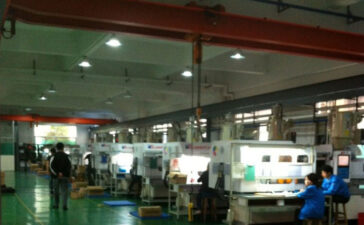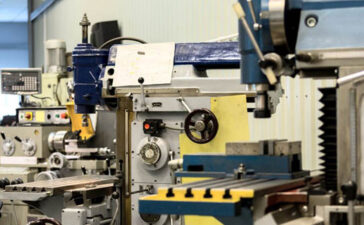We all know that during the processing of aluminum molds, heat treatment will cause aluminum damage, but professional mold processing manufacturers and thai plastic molds tell you how to prevent the mold from being damaged during aluminum processing.
1. In the process of Shenzhen mold processing
1. Stress occurs in EDM. A white bright layer rich in electrode elements and dielectric elements occurs on the surface of the mold, which is hard and brittle. This layer itself will have cracks and stress. High frequency should be selected for EDM, so that the white bright layer is reduced to the minimum. It is necessary to remove it by polishing, and carry out tempering treatment. Tempering is carried out at the third tempering temperature.
2. The quality of rough casting. Some molds produce cracks only after a few hundred pieces are produced, and the cracks develop quickly. It may be that only the appearance dimensions are ensured during casting, and the loose defects such as dendrites, doped carbides, shrinkage holes, and bubbles in the steel are extended and elongated along the processing method to form a streamline. * The final quenching deformation, cracking, brittleness during use, and failure tendency have a great influence.
3. The cutting stress that occurs during the final processing of turning, milling, and planing. This stress can be eliminated by center annealing.
4. Grinding stress occurs during grinding of quenched steel, frictional heat occurs during grinding, and softening layer and decarburization layer occur, which reduces the thermal fatigue strength and simply causes thermal cracking and early cracking. After fine grinding, h13 steel can be heated to 510-570 ° C and kept at a thickness of 25mm for one hour for stress relief annealing.
2. in the production process of die casting
The stamping die should be preheated to a certain temperature before it is produced. Otherwise, when the high-temperature metal liquid is filled, quenching will occur, which will cause the temperature gradient of the inner and outer layers of the die to increase, which will constitute thermal stress, and the die will crack or even crack. During the production process, the mold temperature continues to rise. When the mold temperature is overheated, sticking of the mold simply occurs, and the moving parts fail to cause damage to the appearance of the mold. A cooling temperature control system should be set up to keep the mold working temperature within a certain range.
3. Inappropriate heat treatment during mold processing will cause the mold to crack and be scrapped prematurely. In particular, only quenching and tempering are used, and the surface nitriding technology is carried out. After thousands of die-castings, the mold will show cracks and appearance. Cracked.
The stress that occurs during steel quenching is the result of the superposition of the thermal stress during cooling and the arrangement stress during phase transformation. The quenching stress is the cause of deformation and cracking, and it is necessary to temper to eliminate the stress.








